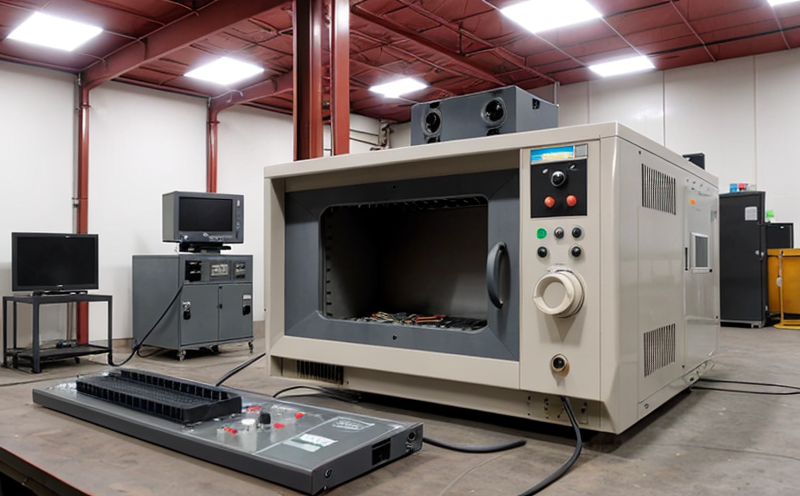EN 60664 Insulation Coordination Testing for Industrial Electronics
The International Electrotechnical Commission (IEC) standard IEC 60664-1:2018 is a comprehensive guide for the insulation coordination of low-voltage electrical equipment. This testing protocol ensures that all components within industrial and commercial electronics are designed to operate safely under specified conditions, minimizing the risk of electric shock or damage from overvoltage events.
The standard applies particularly to devices used in industrial settings where continuous operation is crucial. Insulation coordination involves selecting appropriate insulation materials and designing circuits so that equipment can withstand voltage surges without failure while also protecting personnel and other assets. This process ensures reliable performance under normal operating conditions as well as during fault conditions.
EN 60664-1 focuses on the characteristics, types, and applications of solid dielectrics used in low-voltage electrical equipment. It covers a wide range of industrial electronics including motors, transformers, switchgear, and other components susceptible to insulation breakdown or failure due to high voltage stresses.
The testing procedure outlined by IEC 60664-1 involves several steps. Initially, the engineer must assess the anticipated operating conditions and identify potential stress factors such as atmospheric pollution, mechanical shock, and temperature variations that could affect the insulation performance of electronic components.
Next, appropriate test voltages are selected based on these assessments to simulate real-world scenarios. For example, if a motor will be exposed to transient overvoltages during startup or operation, it must be tested for its ability to withstand such events without damage. Similarly, transformers used in harsh environments may require higher test voltages to account for additional stresses.
After defining the appropriate stress conditions and selecting suitable test voltages, the next step is preparing the specimens according to the standard's specifications. Specimens must be cleaned thoroughly before testing to ensure accurate results reflecting actual performance during use.
The actual testing process typically involves applying specified test voltages gradually over time while monitoring for any signs of insulation breakdown or degradation. Various diagnostic techniques such as partial discharge measurements, capacitance measurements, and temperature rise tests are employed depending on the specific requirements outlined in IEC 60664-1.
Once testing is complete, detailed reports summarizing all findings are generated. These reports include information about the tested specimens' performance under various stress conditions as well as recommendations for improving insulation characteristics if necessary. Compliance with this standard can significantly enhance product reliability and safety in industrial applications.
Failure to properly coordinate insulation within electronic systems can lead to costly downtime, increased maintenance costs, and even potential hazards for workers handling these devices. By adhering strictly to the guidelines provided by IEC 60664-1 during design and manufacturing processes, manufacturers can ensure their products meet stringent safety requirements while maintaining optimal functionality.
In summary, EN 60664 Insulation Coordination Testing is an essential practice for ensuring robust insulation in industrial electronics. Through careful assessment of operating conditions, selection of appropriate test voltages, preparation of specimens, and rigorous testing procedures, this standard helps guarantee reliable performance under all relevant scenarios. This ensures not only compliance with international norms but also enhances overall product quality and safety.
Benefits
The implementation of EN 60664 Insulation Coordination Testing brings numerous advantages to manufacturers, engineers, and end-users alike:
- Avoidance of electrical accidents: Properly coordinated insulation minimizes the risk of electric shock or other injuries during use.
- Increased product lifespan: By ensuring robust insulation against various stress factors, products are less likely to fail prematurely due to insulation breakdown.
- Better reliability: Consistent performance under all anticipated conditions leads to higher customer satisfaction and trust in brand reputation.
- Compliance with international standards: Adherence to IEC 60664-1 ensures that products meet the highest safety and quality benchmarks recognized globally.
These benefits contribute significantly to reducing costs associated with product recalls, warranty claims, and liability issues while simultaneously enhancing brand value through superior product performance.
International Acceptance and Recognition
The International Electrotechnical Commission (IEC) is responsible for preparing international standards in the domain of electricity. IEC 60664-1 has gained widespread acceptance across various industries worldwide due to its rigorous approach towards ensuring safe insulation coordination practices.
Many countries have adopted this standard as a national standard or incorporated it into their own regulatory frameworks regarding electrical equipment safety. For instance, the United States recognizes IEC standards through its National Electrical Code (NEC), while Europe follows similar practices under its New Approach Directives for low-voltage devices.
Compliance with EN 60664-1 is crucial not only because it provides a benchmark for safe design but also because many international buyers require proof of compliance before placing orders. This ensures that suppliers meet the necessary safety and quality criteria expected by global markets.
The growing trend towards sustainable practices further underscores the importance of adhering to such standards like IEC 60664-1, as they contribute significantly to reducing waste generation throughout product lifecycles. By promoting longer-lasting products with better insulation coordination, manufacturers can help minimize environmental impacts associated with frequent replacements or repairs.
In conclusion, international acceptance and recognition of EN 60664 Insulation Coordination Testing underscores its significance in ensuring safe and reliable industrial electronics across diverse geographical regions.





